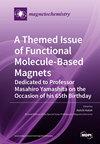从微米到纳米:研磨天然磁铁矿用于采集微藻
IF 2.5
4区 化学
Q2 CHEMISTRY, INORGANIC & NUCLEAR
引用次数: 0
摘要
微藻是一种很有前途的可持续生物质和能源原料。然而,培养后的低细胞浓度限制了当前的应用领域。磁性微藻收获是克服开发这种自然资源的经济局限性的最新方法。因此,已经应用了不同类型的颗粒,主要是合成生产的磁性纳米颗粒,尽管没有工业规模的颗粒。几微米到几纳米之间的颗粒尺寸尚未进行测试。我们预计200–500 nm将有利于收获,并作为高可用表面和良好分离性能之间的折衷。然而,这种介于微米级和纳米级之间的中等磁铁矿粒度无法通过化学合成达到。因此,我们在行星球磨机和搅拌珠磨机中研磨天然磁铁矿,产生目标尺寸范围内的颗粒。应用从约6µm至250 nm研磨的矿石颗粒产生的收获效率与合成生产的纳米颗粒(约10 nm)相当,只有一半的BET表面。在碱性pH条件下,用研磨颗粒可以完全收获含盐微藻微藻。我们证明了用天然、低成本、易于分离和易于获得的磁铁矿颗粒进行收获工艺的可行性,这是开发生命科学中有价值的微藻产品的一个有希望的步骤。本文章由计算机程序翻译,如有差异,请以英文原文为准。
From Micro to Nano: Grinding Natural Magnetite Ore for Microalgae Harvesting
Microalgae represent a promising feedstock for sustainable biomass and energy. The low cell concentration after cultivation, however, limits the current application fields. Magnetic microalgae harvesting is a recent approach to overcome the economic limitations of exploiting this natural resource. Accordingly, different particle types have been applied, mainly synthetically produced magnetic nanoparticles, though none on an industrial scale. Particle sizes between a few micrometers and a few nanometers have not been tested. We expected 200–500 nm to be advantageous for harvesting and as a compromise between the highly available surface and good separation properties. However, this intermediate magnetite particle size between the micro- and nano-scale cannot be reached via chemical synthesis. Therefore, we ground natural magnetite ore in a planetary ball mill and an agitator bead mill producing particles in the targeted size range. Applying ore particles ground from ~6 µm to 250 nm yields harvesting efficiencies comparable to synthetically produced nanoparticles (Ø ~ 10 nm), with only half the BET surface. Complete harvesting of saline microalgae Microchloropsis salina is possible with ground particles at alkaline pH. We demonstrate the feasibility of a harvesting process with natural, low-cost, easily separable, and readily available magnetite ore particles as a promising step towards exploiting valuable microalgal products in life sciences.
求助全文
通过发布文献求助,成功后即可免费获取论文全文。
去求助
来源期刊

Magnetochemistry
Chemistry-Chemistry (miscellaneous)
CiteScore
3.90
自引率
11.10%
发文量
145
审稿时长
11 weeks
期刊介绍:
Magnetochemistry (ISSN 2312-7481) is a unique international, scientific open access journal on molecular magnetism, the relationship between chemical structure and magnetism and magnetic materials. Magnetochemistry publishes research articles, short communications and reviews. Our aim is to encourage scientists to publish their experimental and theoretical results in as much detail as possible. Therefore, there is no restriction on the length of the papers. The full experimental details must be provided so that the results can be reproduced.
 求助内容:
求助内容: 应助结果提醒方式:
应助结果提醒方式:


